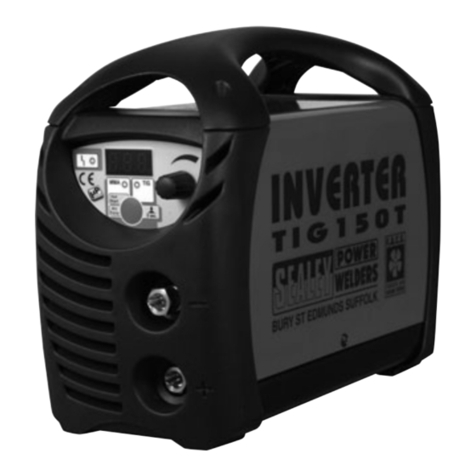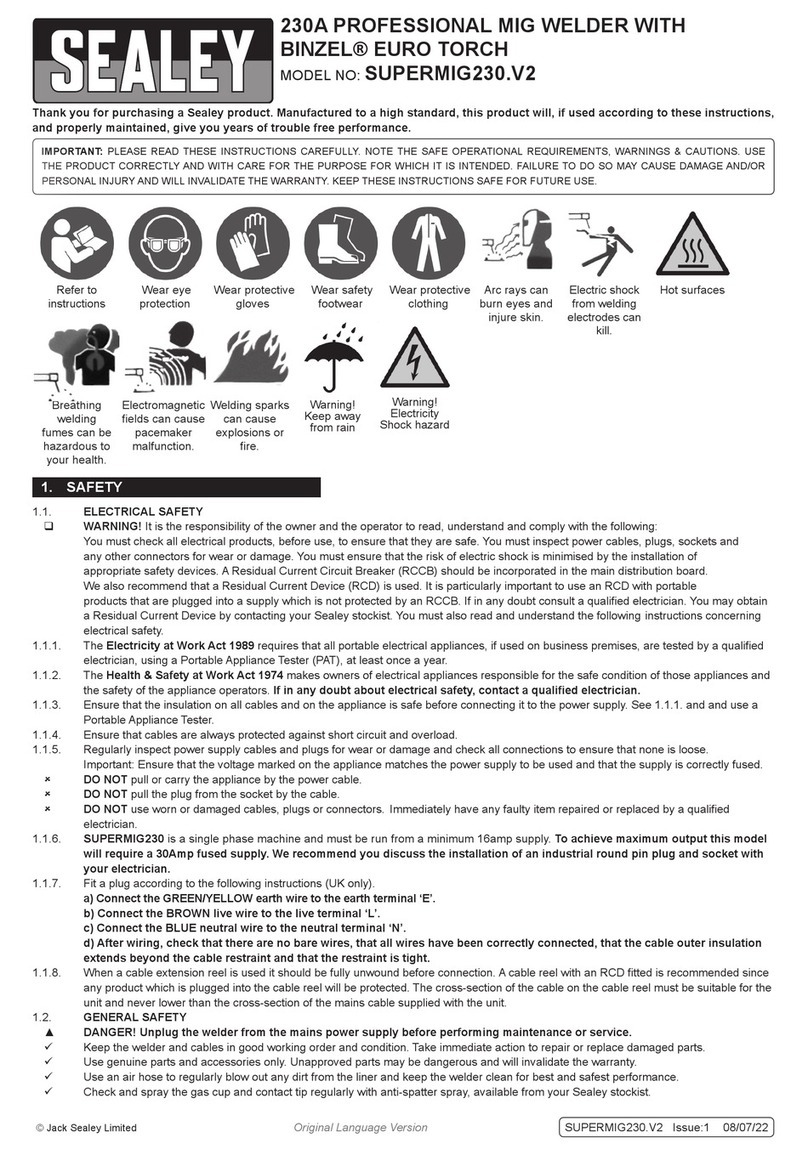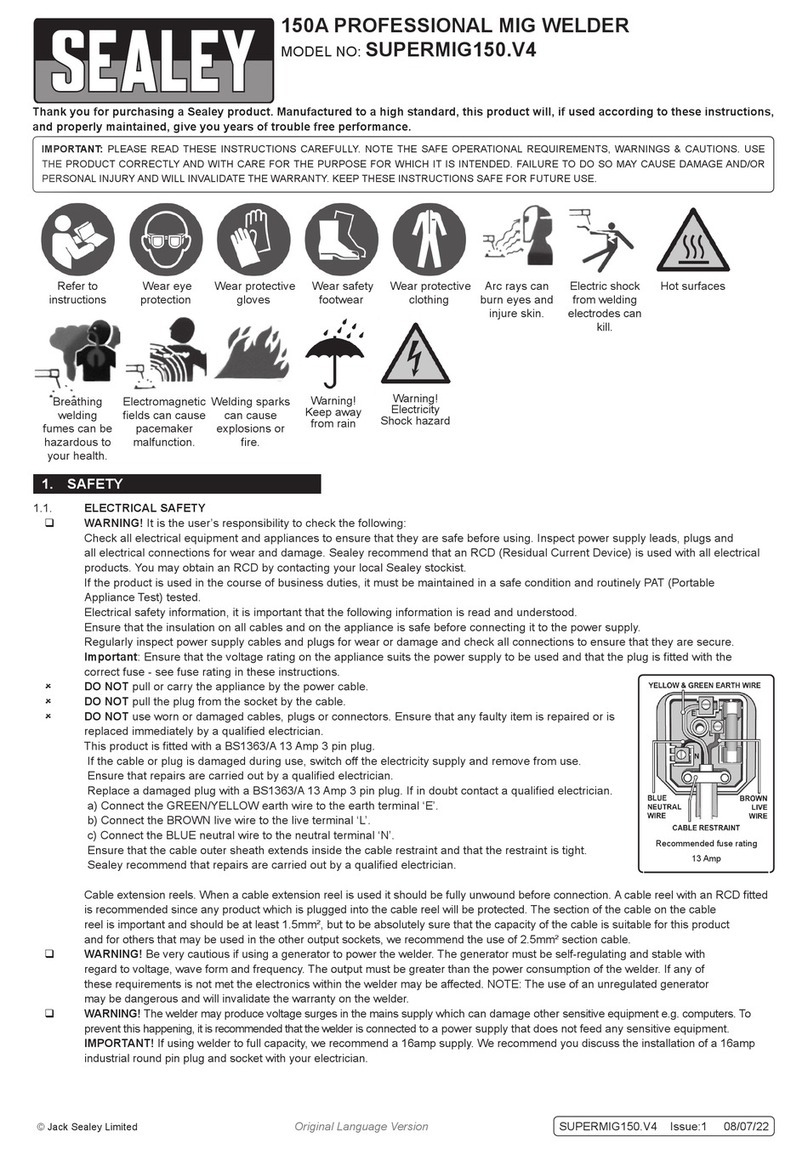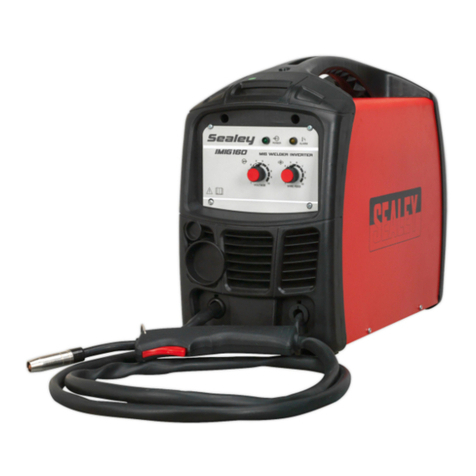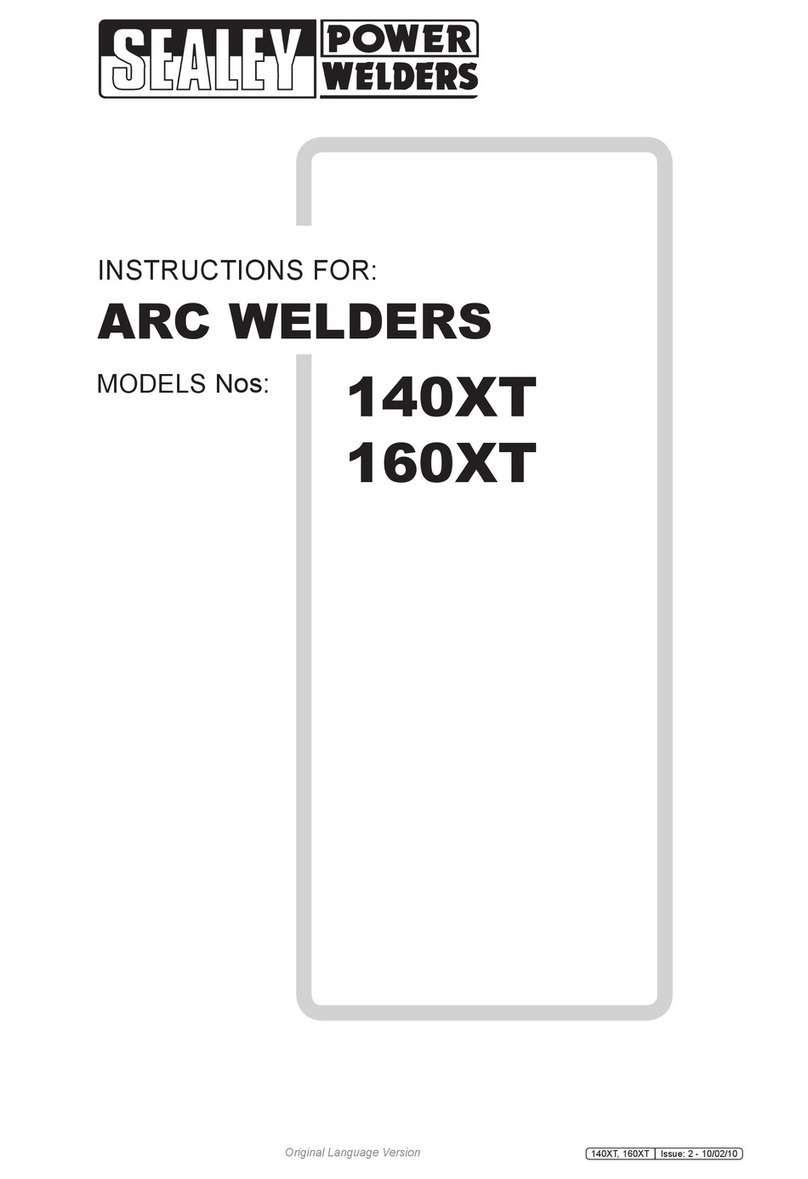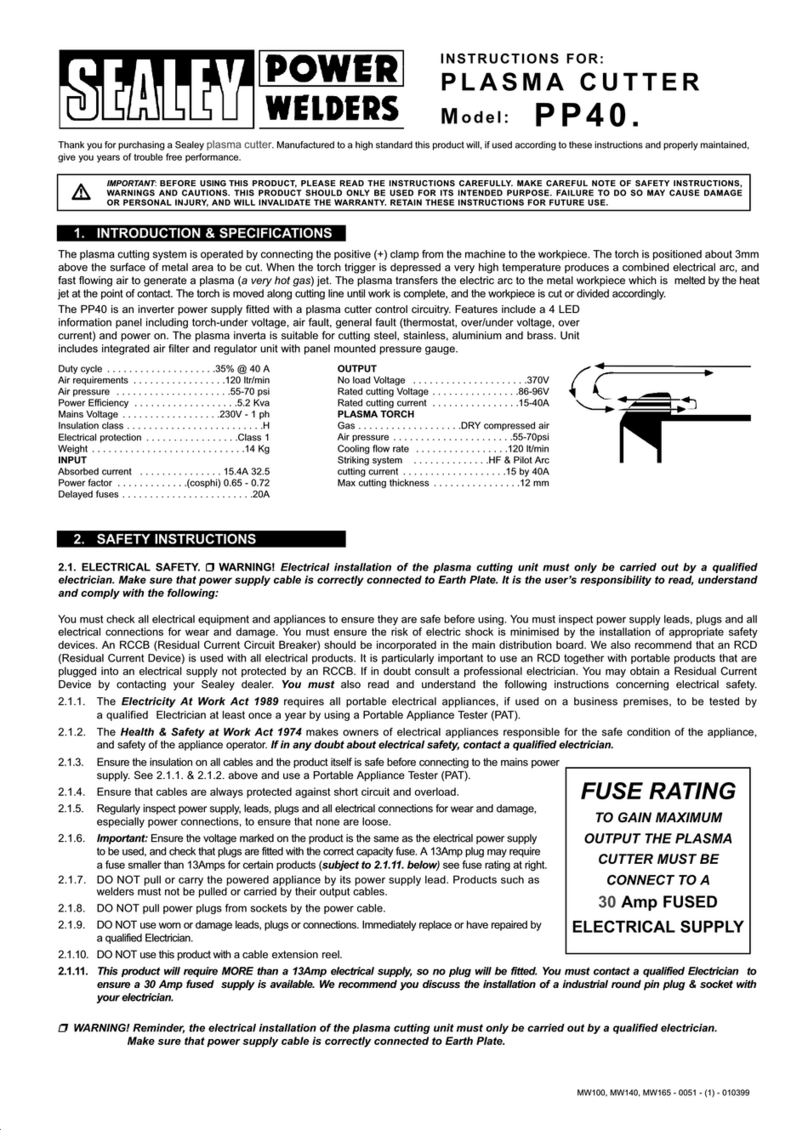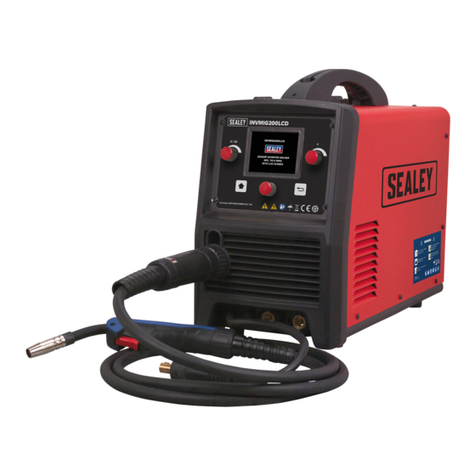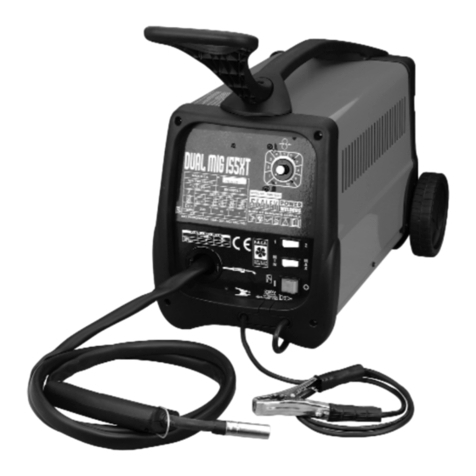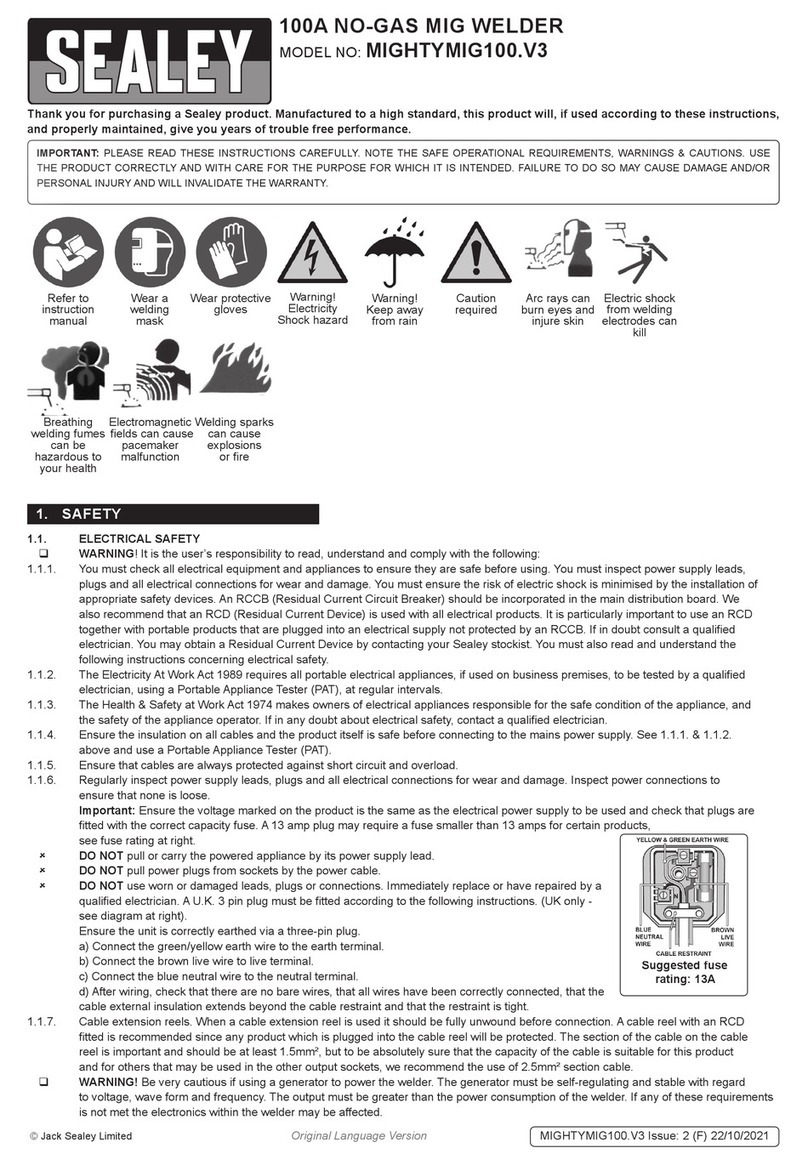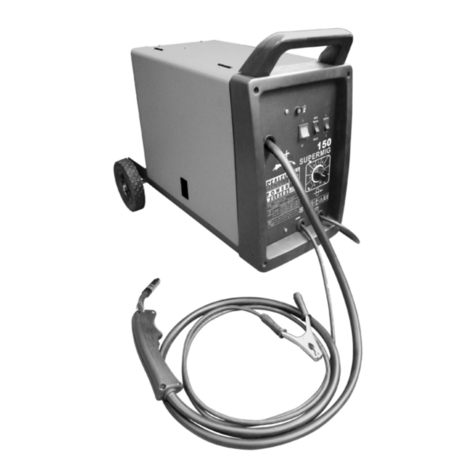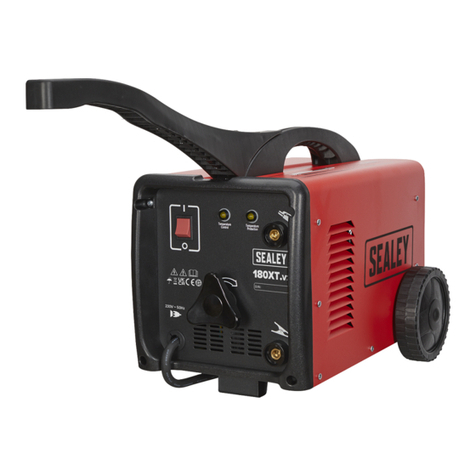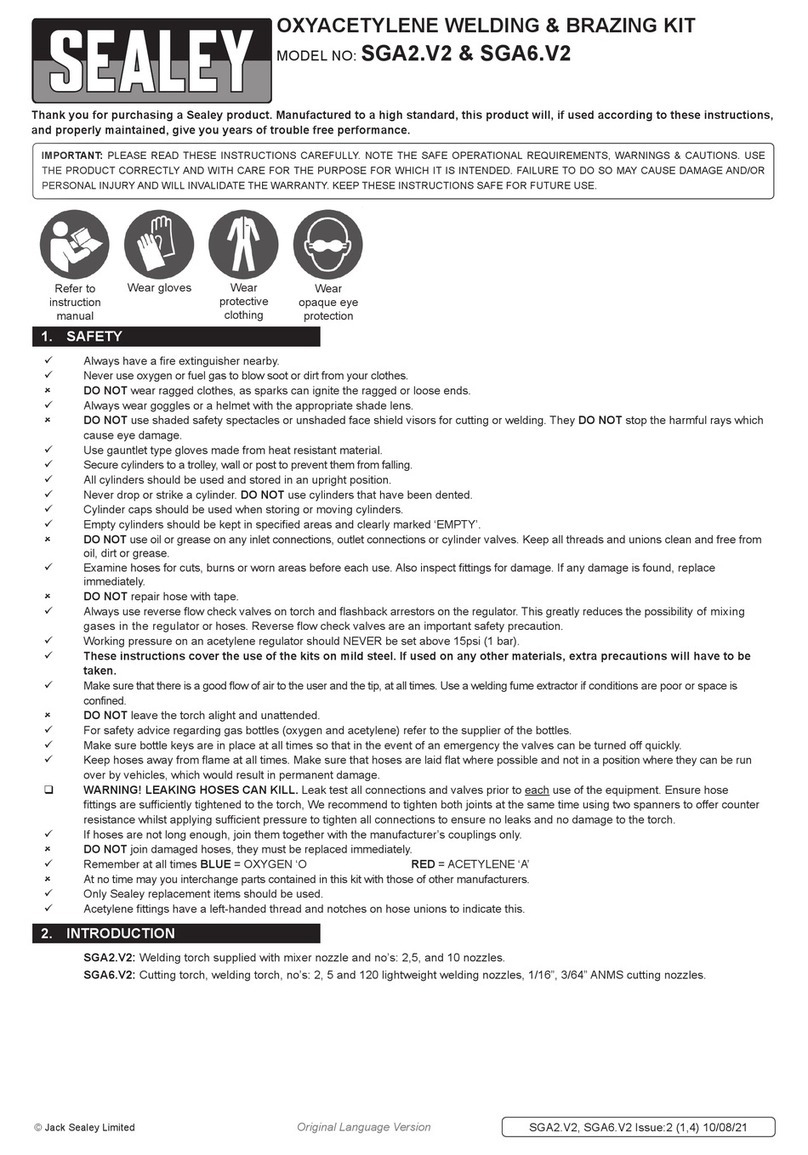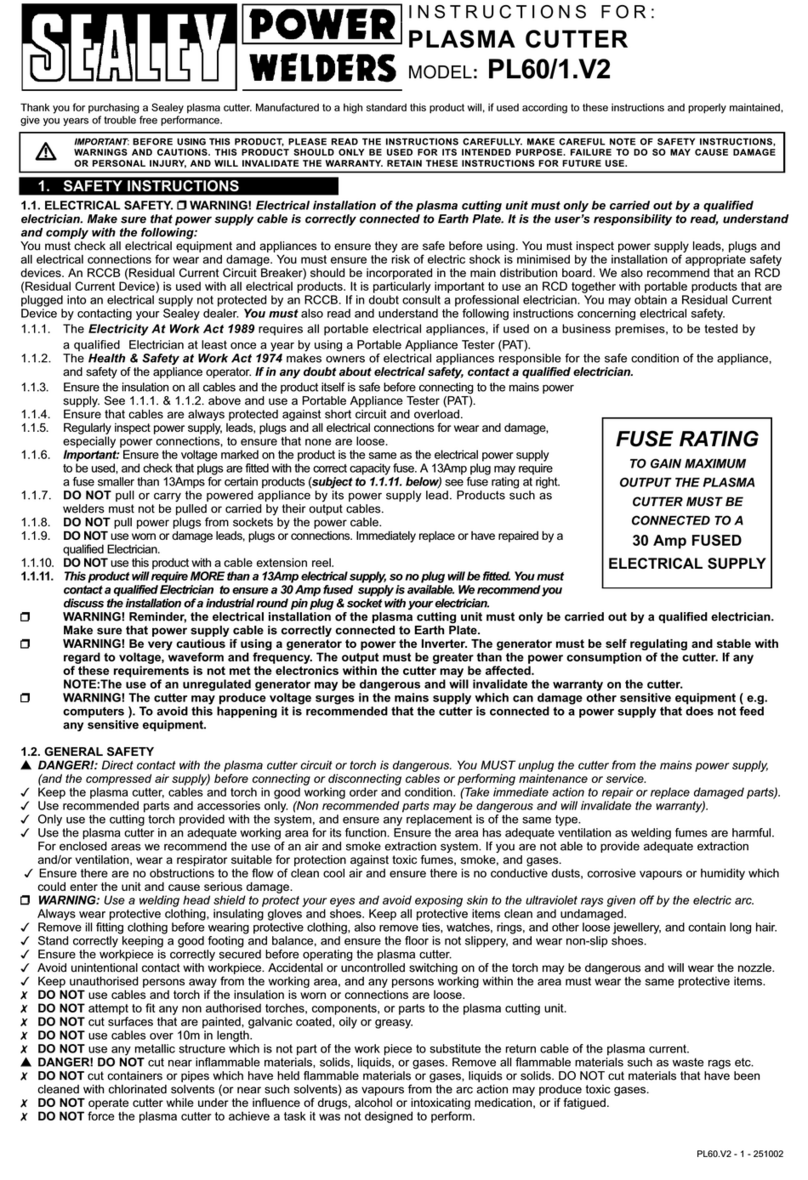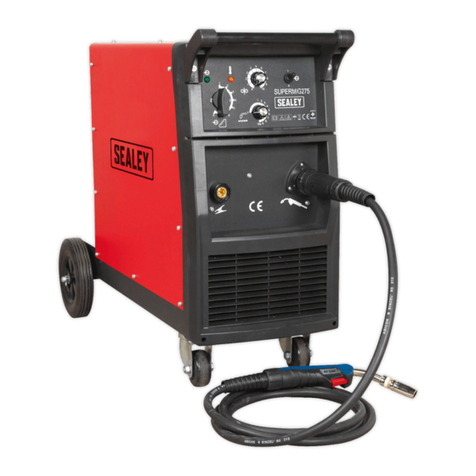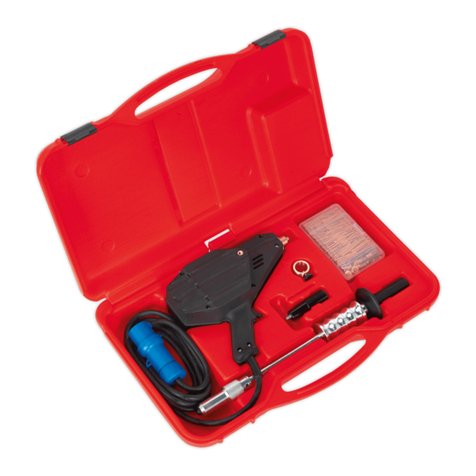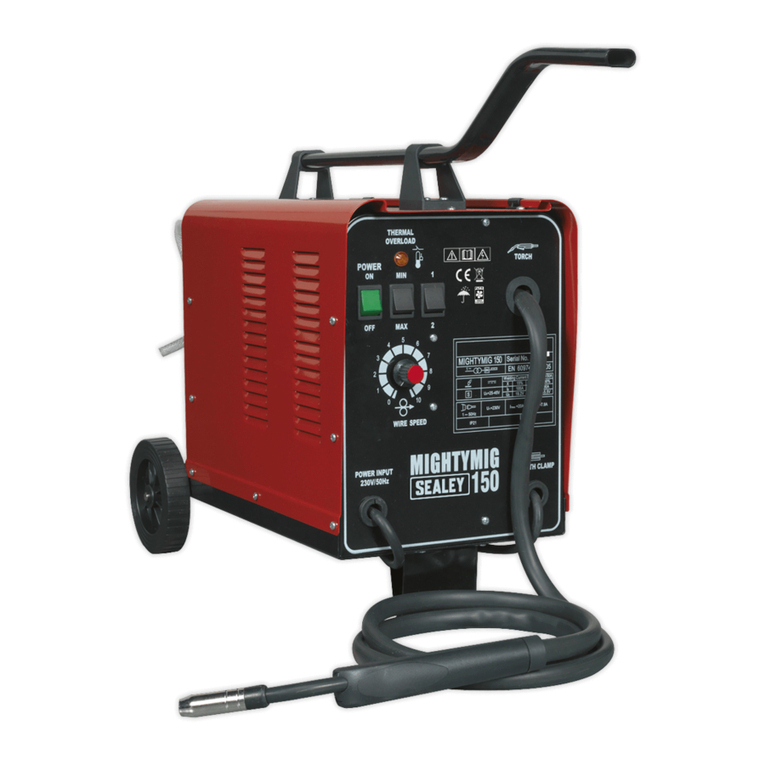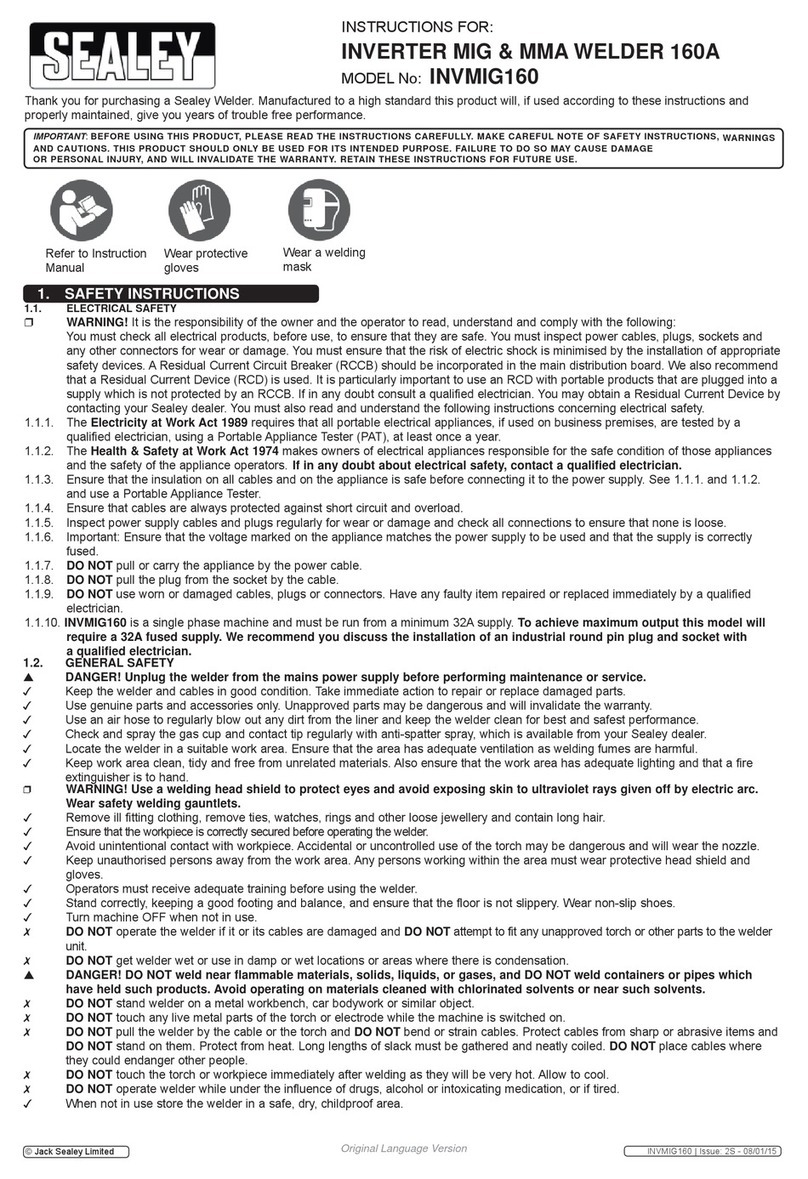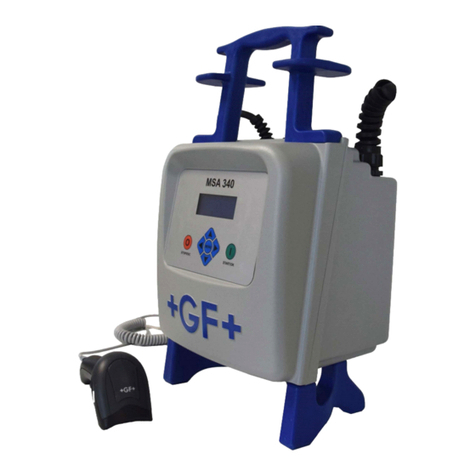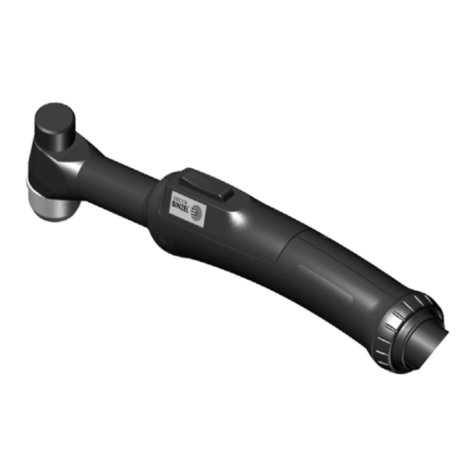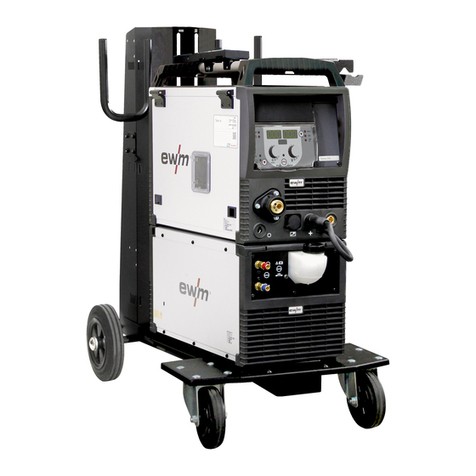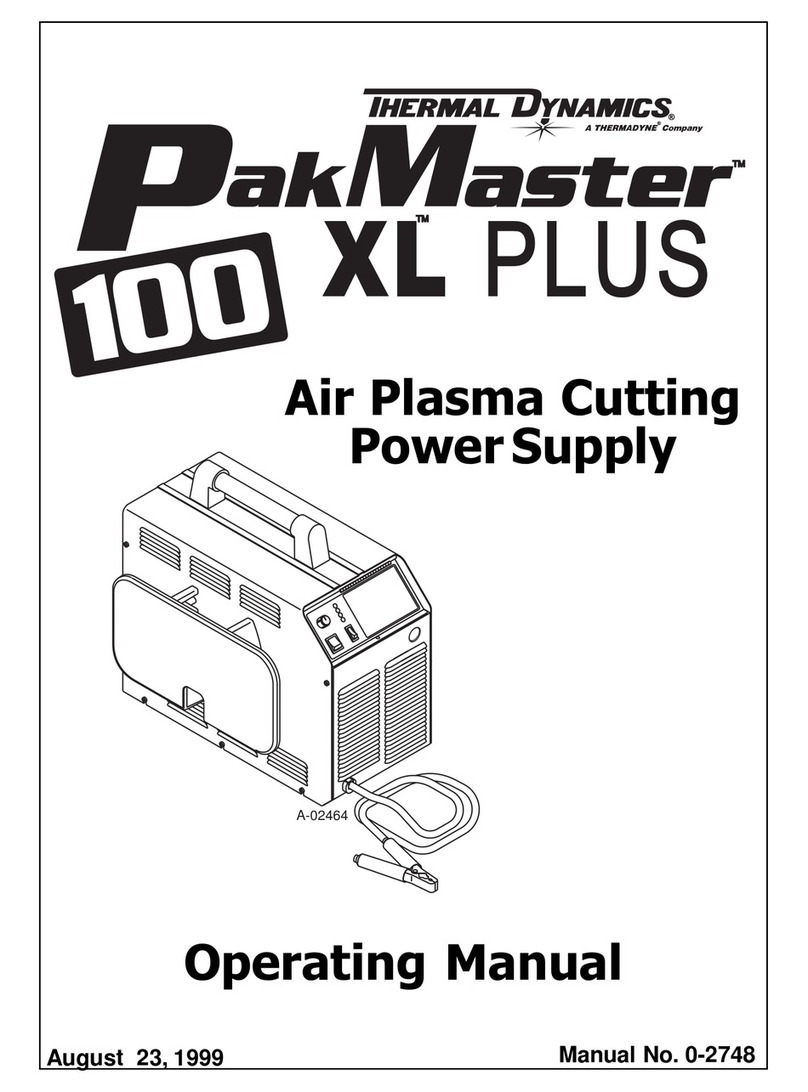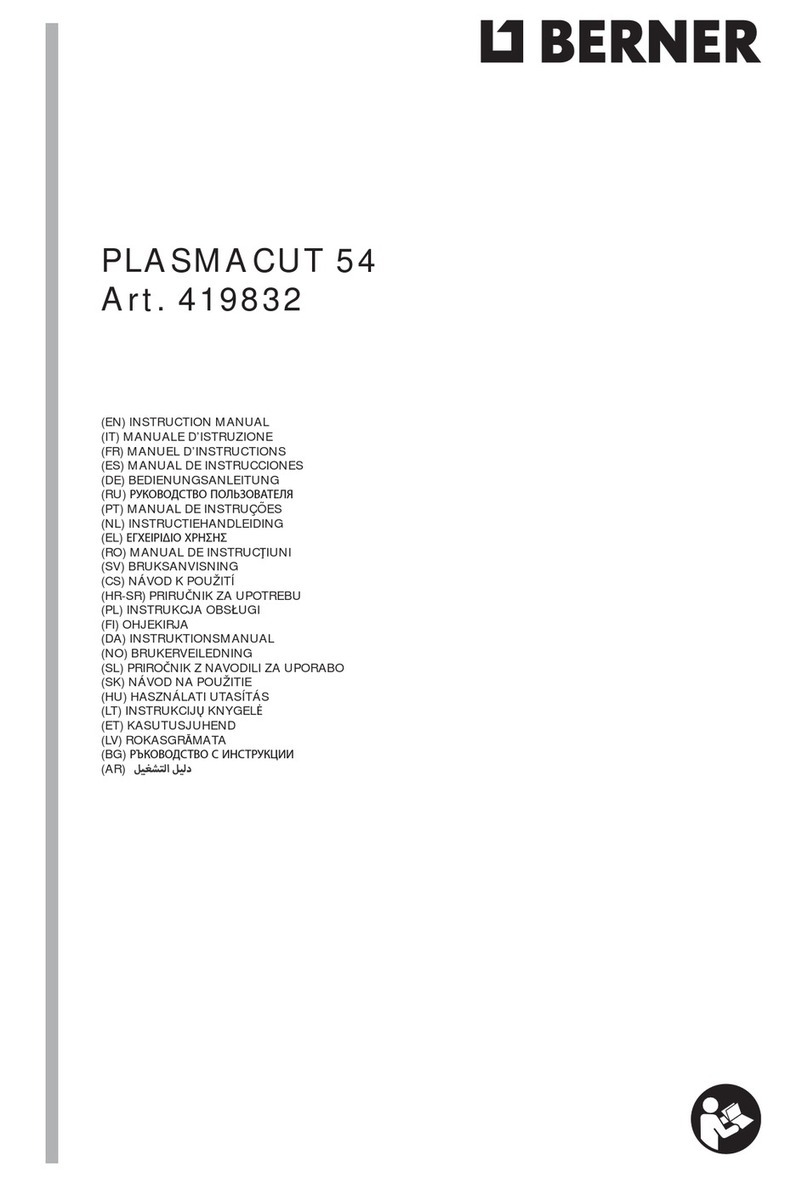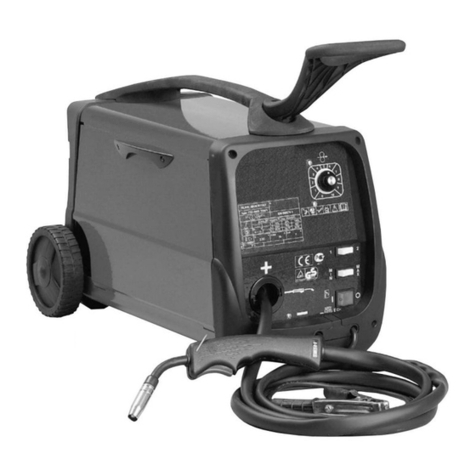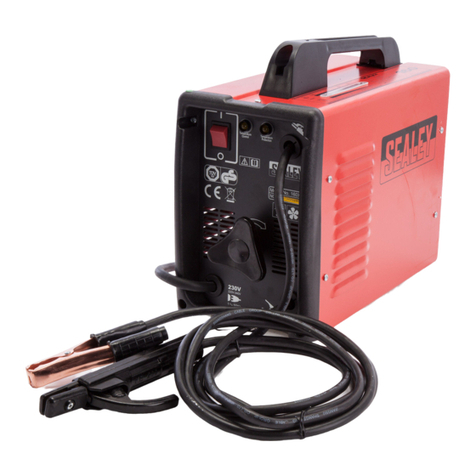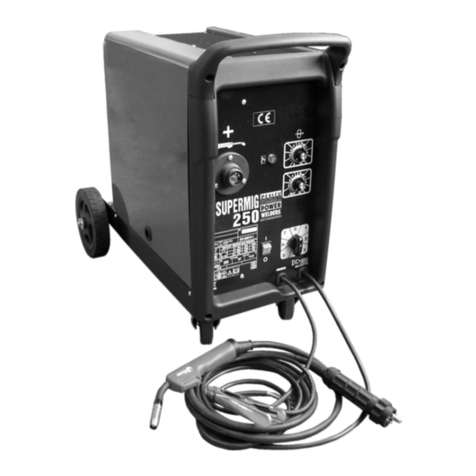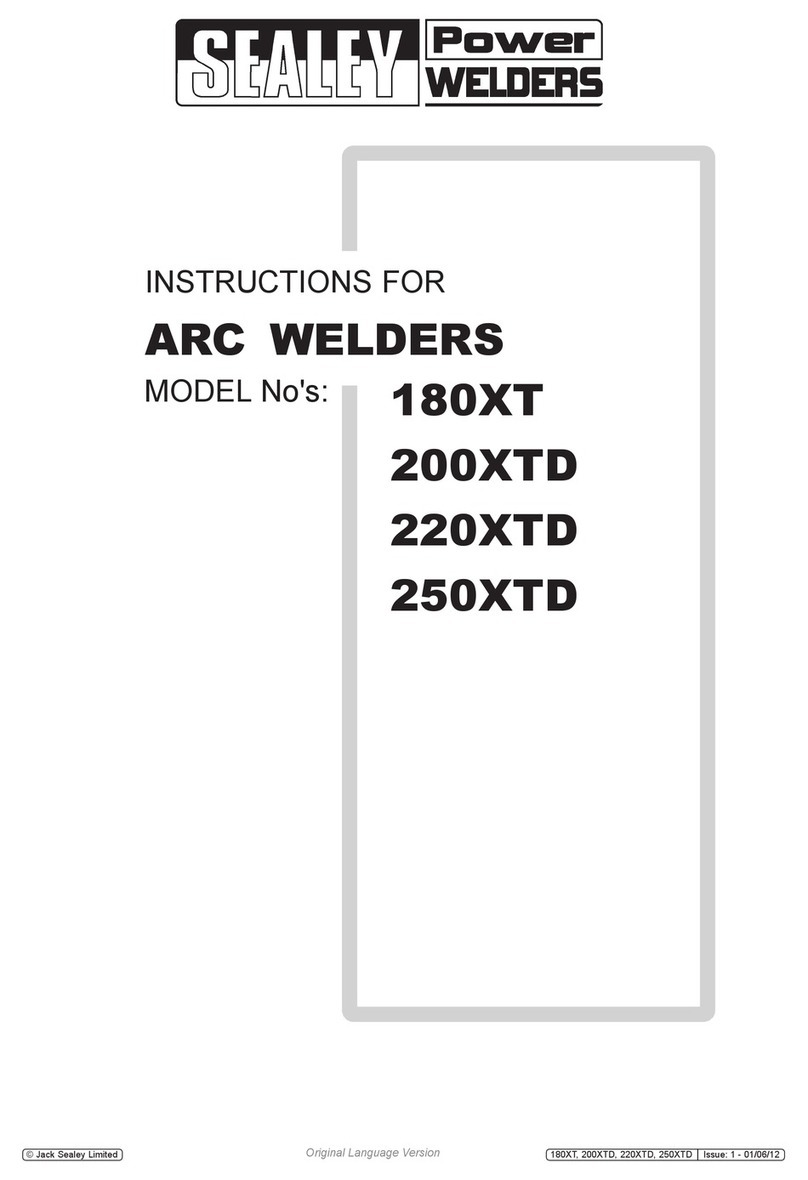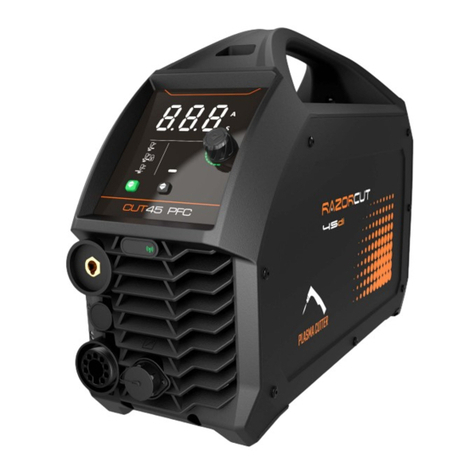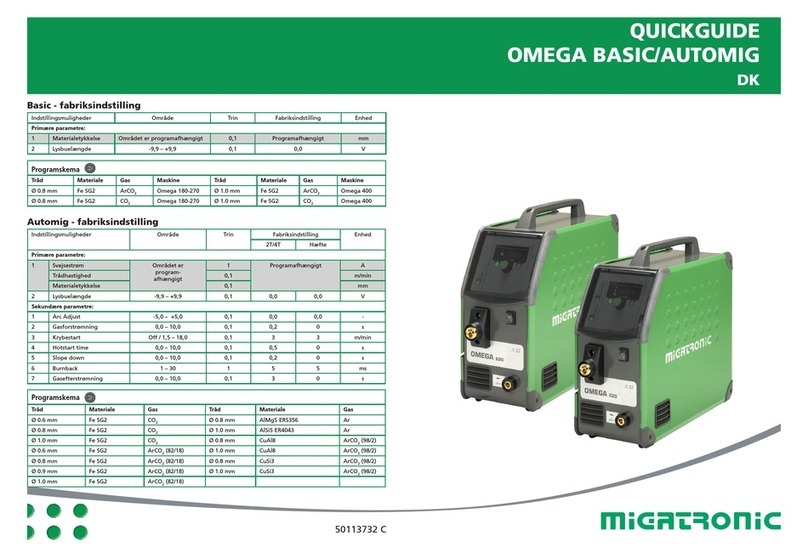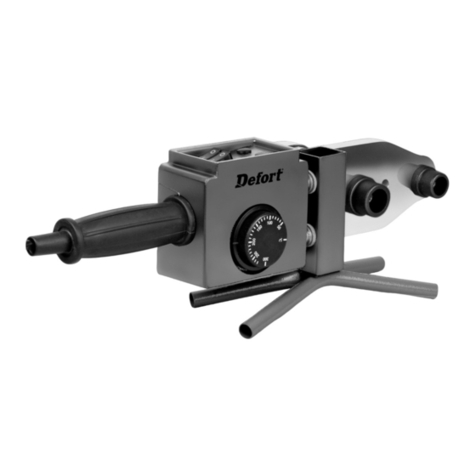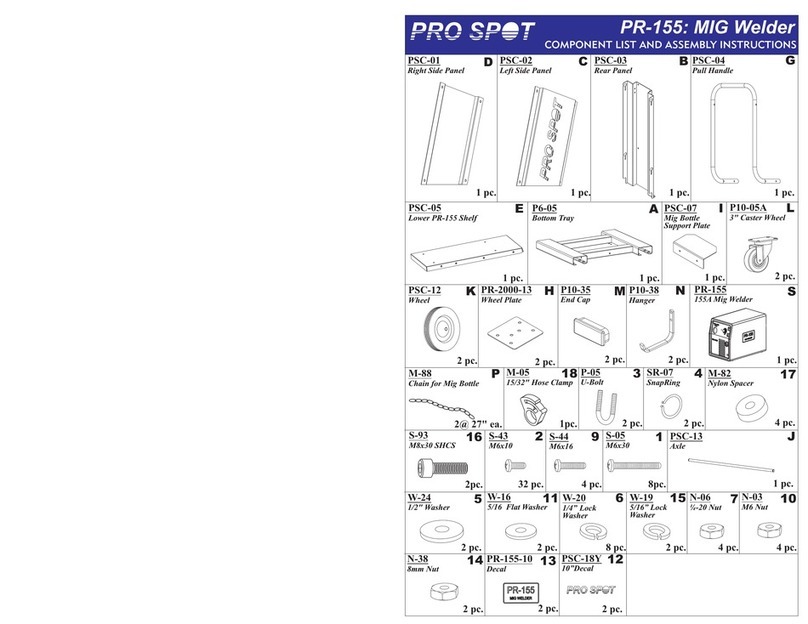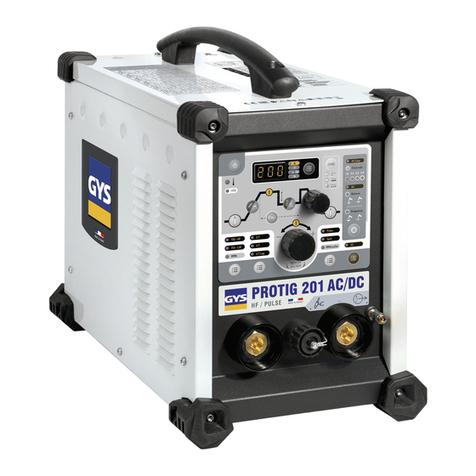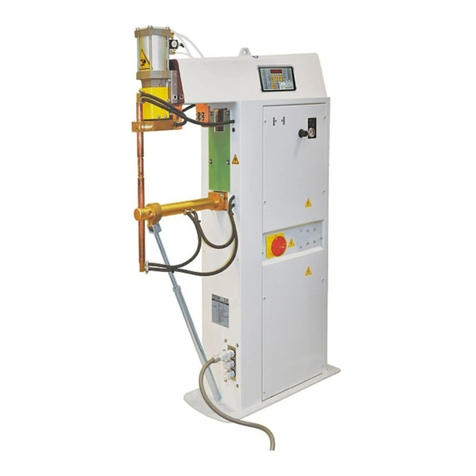SGA1.V2 - 3 - 060307
5.3 SETTING THE GAS REGULATOR PRESSURES Close the regulators by turning the adjusting screws anti-clockwise to relieve the
pressure on the diaphragm before opening the cylinder valves. Slowly open the cylinder valve on the oxygen and acetylene bottles in
turn. As you do so the high pressure gauge (left hand) on each regulator will register the pressure in the cylinder to which it is attached.
5.3.1 Slowly open each regulator in turn by turning the adjusting knob clockwise. As you do so the outlet pressure gauge (right hand) on
each regulator will register the outlet pressure of gas being fed to the torch. Adjust the pressure according to the size of nozzle in use
and the thickness of the material to be cut or welded. Refer to the chart in section 7.1.
#WARNING! Never set acetylene regulator at a delivery pressure above 15psi (1 bar).
5.3.2 After adjusting the regulators to the desired operating pressures check connections for leaks using an approved leak detection solution.
Check for leaks at all connections. If a leak is found, tighten fitting more securely. If leak persists, discontinue use and call your supplier.
5.3.3 Briefly open and close the acetylene valve on the torch handle to check that the gas is flowing.
5.3.4 Ensure that the oxygen control valve on the cutting attachment is closed.
5.3.5 Fully open the oxygen control valve on the torch handle.
5.3.6 Briefly open and close the oxygen control valve on the cutting attachment to check that the gas is flowing.
5.3.7 Briefly operate the oxygen control lever on the cutting attachment to check that the gas is flowing from the centre of the cutting nozzle.
#WARNING! Always use welding gloves and suitable eye protection when welding or cutting. Contact your local Sealey dealer for a
full range of protective equipment.
5.4 LIGHTING THE TORCH Ensure that the gas hoses will not be in the way of the torch when ignited. Ensure that the torch is facing away
from you before lighting.
5.4.1 Holding the torch in one hand and the striker in the other open the acetylene valve on the torch handle a 1/4 turn (the valve knob is
colour coded red). Operate the striker close to the tip to light the acetylene.
5.4.2 The cutting tip has six separate holes in it arranged radially and each of these holes will have a small flame coming from it. Develop the
correct flame at each hole by alternately increasing the flow of acetylene and then oxygen until a neutral flame is achieved at each hole
having a white cone about an 1/8” long.
5.5 USING THE OXYGEN CONTROL LEVER Use the pre-heat flame to heat the metal to be cut to a cherry red colour. When the metal
reaches this stage press the oxygen control lever to initiate the cutting process. This feeds additional oxygen through a central hole in
the cutting tip. No flame is produced from this hole but the pure oxygen reacts chemically with the hot metal causing it to oxidise i.e. burn away.
5.6 SHUTTING DOWN AND LEAVING SAFE Turn off the acetylene valve on the torch first and then turn off the oxygen valve a few
moments later. Note: Turning the gases off in the wrong order can cause damage to the torch.
5.6.2 Close both cylinder valves.
5.6.3 Drain gas from oxygen regulator by opening the oxygen valve on the torch handle. Similarly drain gas from the acetylene regulator.
5.6.4 Release the adjusting knobs on the regulators. This is done by turning them anti-clockwise.
6. MAINTENANCE
EQUIPMENT MAINTENANCE
Each time equipment is used Annual Replacement/ Replacement/
(By the operator) Refurbishment Refurbisment
Intervals Guideline
REGULATORS Visual examination to determine Functional tests to ensure 5 years or manufactuers Replace with a new,
and their suitability for service (e.g. correct correct operation recommendations. repaired, or service
integral protective gas, pressure rating, damage, NOTE: If regulators are exchange unit.
devices. condition of threads and sealing repaired or refurbished
surfaces, oil or grease this shall be done in
contamination. accordance with the
BCGA Code of practice
Leak test all joints at working CP17 by a reputable
pressure. repairer.
FLASHBACK Visual examination to determine Check unit for flow restriction. 5 years or manufacturers Replace with a new,
ARRESTORS suitability for service (e.g. gas, Reverse flow to ensure recommendations. repaired, or service
and their integral pressure rating, damage, correct operation of non-return exchange unit.
cut off valves condition of threads and sealing valves and pressure sensitive
surfaces, oil or grease cut off valves where fitted. If
contamination. of the pressure sensitive type
check shut off in the tripped
Leak test all joints at working condition in the direction of
pressure. flow.
HOSE Visual safety check to determine Reverse hose to ensure the Determined by local Replace as required.
ASSEMBLIES suitabilty for service (e.g gas, correct operation of non-return operating conditions.
(including non- pressure rating, damage), valve where fitted. Bend hose
return valves ) condition of cover (e.g. kinking in a tight radius to ensure
and twisting ), threads and reinforcement is not visible.
sealing surfaces. Check
anti-whip restraints where fitted.
Leak test all joints at working
pressure.
BLOWPIPES Visual examination of the nozzle Test valve functions. Blank Determined by local Replace with a new,
and inlet seatings for damage. exits and leak test for internal operating conditions. repaired, or service
Leak test all joints at working malfunctions. exchange unit.
pressure.
6.1 Annual maintenance should be carried out by a person who has sufficient practical experience of oxyacetylene gas equipment and a
detailed theoretical knowledge of the functioning of the equipment, the properties of gases used and potential defects and hazards
which may occur and their importance to the integrity and safety of the equipment.
6.2 Regulator elastomers and seals will wear and deteriorate in service and will also deteriorate out of service. Regulators stored for 1 year
or over without use should receive inspection as per the annual maintenance schedule.

